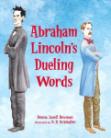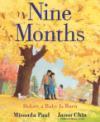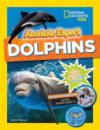
A STEM-tastic Search Party mission, if you choose to accept it:
STEM Tuesday Search Party Event
What: A From the Mixed-Up Files online scavenger hunt search using the new STEM Tuesday site search tool to find the answers to the questions in the Google Form contest entry.
When:
- February 20, 2019 – Contests begins!
- March 28, 2019 @ Midnight EST – Entry deadline by Google form.
- April 1, 2019 – Announce the winners via STEM Tuesday post.
Where: The From the Mixed-Up Files STEMTuesday.com site search tool
Prizes: Entries with the correct answers will be awarded a prize package from one or more of the 13 donating authors. (If more entries than author prize packages are received, they will be assigned a number according to the order received and the 13 numbers will be randomly selected using a randomizer selector tool. If less than 13 entries are received, the prize packages will be evenly distributed.)
The Backstory
Stephanie Stemread sat in her student volunteer cubicle in the dim, dusty recesses of the book stacks in Edison Falls Public Library. Mrs. Newton had assigned Steph the task of sifting through the middle grade STEM nonfiction section and weeding out the outdated books left by the former and recently retired children’s librarian. Frederick de Fictione.
While Mr. de Fictione had in an eye for children’s fiction, he ignored all things science, technology, engineering, and mathematics. Thus, Mrs. Newton gave Steph the job of weeding the outdated middle-grade STEM books. This task was more than a job for Stephanie Stemread; it was a mission.
She flipped through what, once upon a time, must have been some sort of textbook. “One day man may even walk on the moon?” she read as she snapped the book shut in a cloud of dust and tossed it into the recycling bin.
Ding!
The front desk bell rang and echoed to complete silence down the aisles of Edison Falls Public Library. Stephanie walked to the front desk and found herself face to face with a short, elderly woman dressed all in black with a black hat pulled low over her dark sunglasses. The lady in black cleared her throat, pursed her lips, and handed an envelope across the counter to Stephanie with a black-gloved hand. The elderly lady leaned in and whispered in a raspy voice, “For the children’s section, dear.”.
Stephanie grabbed the envelope and studied the letters “S”, “T”, “E”, and “M” scrawled on the paper in a shaky script.
“STEM?” she asked.
“Shhh!” The lady in black looked around the library and pointed a long finger at the envelope. “It’s all in there.”
“But—”
“Shhh! Not a word to anyone.”
“But—”
“Not a word!”
As Steph stood completely dumbfounded and holding the envelope, the lady in black slunk toward the door. The door opened with a flood of sunlight. The old woman slipped through and paused briefly to remind Stephanie, “It’s all in there.”.
The door slammed shut.
The envelope shook in Steph’s hands while she fumbled to open the seal of the mysterious STEM letter.

STEM TUESDAY SEARCH PARTY PRIZE LIST
(How about this list of prizes for the Search Party contest? Pretty awesome. A huge shout-out to all the authors listed who donated books!)
 POISON: DEADLY DEEDS, PERILOUS PROFESSIONS, AND MURDEROUS MEDICINES
POISON: DEADLY DEEDS, PERILOUS PROFESSIONS, AND MURDEROUS MEDICINES
 THE CRAYON MAN: THE TRUE STORY OF THE INVENTION OF THE CRAYOLA CRAYON
THE CRAYON MAN: THE TRUE STORY OF THE INVENTION OF THE CRAYOLA CRAYON
SUPER SCIENCE FEATS (4-book Series from Pogo Books published by Jump!)
THE FIRST FLIGHT, THE MOON LANDING, THE INTERNET, CELL PHONES
 STEP RIGHT UP: HOW DOC AND JIM KEY TAUGHT THE WORLD ABOUT KINDNESS, illustrated by Daniel Minter (Lee and Low, 2016)
STEP RIGHT UP: HOW DOC AND JIM KEY TAUGHT THE WORLD ABOUT KINDNESS, illustrated by Daniel Minter (Lee and Low, 2016)
 ABRAHAM LINCOLN’S DUELING WORDS, illustrated by S.D. Schindler (Peachtree, 2018)
ABRAHAM LINCOLN’S DUELING WORDS, illustrated by S.D. Schindler (Peachtree, 2018)
 BOLD WOMEN OF MEDICINE: 21 STORIES OF ASTOUNDING DISCOVERIES, DARING SURGERIES, AND HEALING BREAKTHROUGHS.
BOLD WOMEN OF MEDICINE: 21 STORIES OF ASTOUNDING DISCOVERIES, DARING SURGERIES, AND HEALING BREAKTHROUGHS.
 EXPLORE ATOMS AND MOLECULES! With 25 Great Projects
EXPLORE ATOMS AND MOLECULES! With 25 Great Projects
Donating TWO prize packages:
Book Set #1 (plus a set of water stickers and a set of new baby stickers!)
NINE MONTHS (Advance F&G copy only)

Book set #2 (plus a few bookmarks!)
I AM FARMER: GROWING AN ENVIRONMENTAL MOVEMENT IN CAMEROON
ONE PLASTIC BAG: ISATOU CEESAY AND THE RECYCLING WOMEN OF THE GAMBIA
(Author of Hedy Lamarr’s Double Life, Grace Hopper: Queen of Computer Code, and Ada Byron Lovelace and the Thinking Machine)
- A classroom prize pack of:
* bookmarks
* stickers
* STEM-related word searches
* pencils
 WHO EATS ORANGE?, illustrated by Robin Page (Beach Lane/S&S, 2018)
WHO EATS ORANGE?, illustrated by Robin Page (Beach Lane/S&S, 2018)
 MISSION TO PLUTO
MISSION TO PLUTO
A 3-pack of:
ASTRONAUT-AQUANAUT
ABSOLUTE EXPERT: DOLPHINS
ZOOLOGY: COOL WOMEN WHO WORK WITH ANIMALS
Mike Hays has worked hard from a young age to be a well-rounded individual. A well-rounded, equal opportunity sports enthusiasts, that is. If they keep a score, he’ll either watch it, play it, or coach it. A molecular microbiologist by day, middle-grade author, sports coach, and general good citizen by night, he blogs about sports/training related topics at www.coachhays.com and writer stuff at www.mikehaysbooks.com. Two of his science essays, The Science of Jurassic Park and Zombie Microbiology 101, are included in the Putting the Science in Fiction collection from Writer’s Digest Books. He can be found roaming around the Twitter-sphere under the guise of @coachhays64.

 Amy M. O’Quinn
Amy M. O’Quinn 
 Natascha Biebow
Natascha Biebow Nikole Brooks Bethea
Nikole Brooks Bethea



 Susan M Latta
Susan M Latta  Janet Slingerland
Janet Slingerland Miranda Paul
Miranda Paul 



 Kate Narita
Kate Narita 
 Laurie Wallmark
Laurie Wallmark  Mary Kay Carson
Mary Kay Carson Jennifer Swanson
Jennifer Swanson





 The Earth is a system. Changes in portions of a system can resonate throughout the entire system. This is the so-called
The Earth is a system. Changes in portions of a system can resonate throughout the entire system. This is the so-called 




 Jodi Wheeler-Toppen is a former science teacher and the author of the
Jodi Wheeler-Toppen is a former science teacher and the author of the